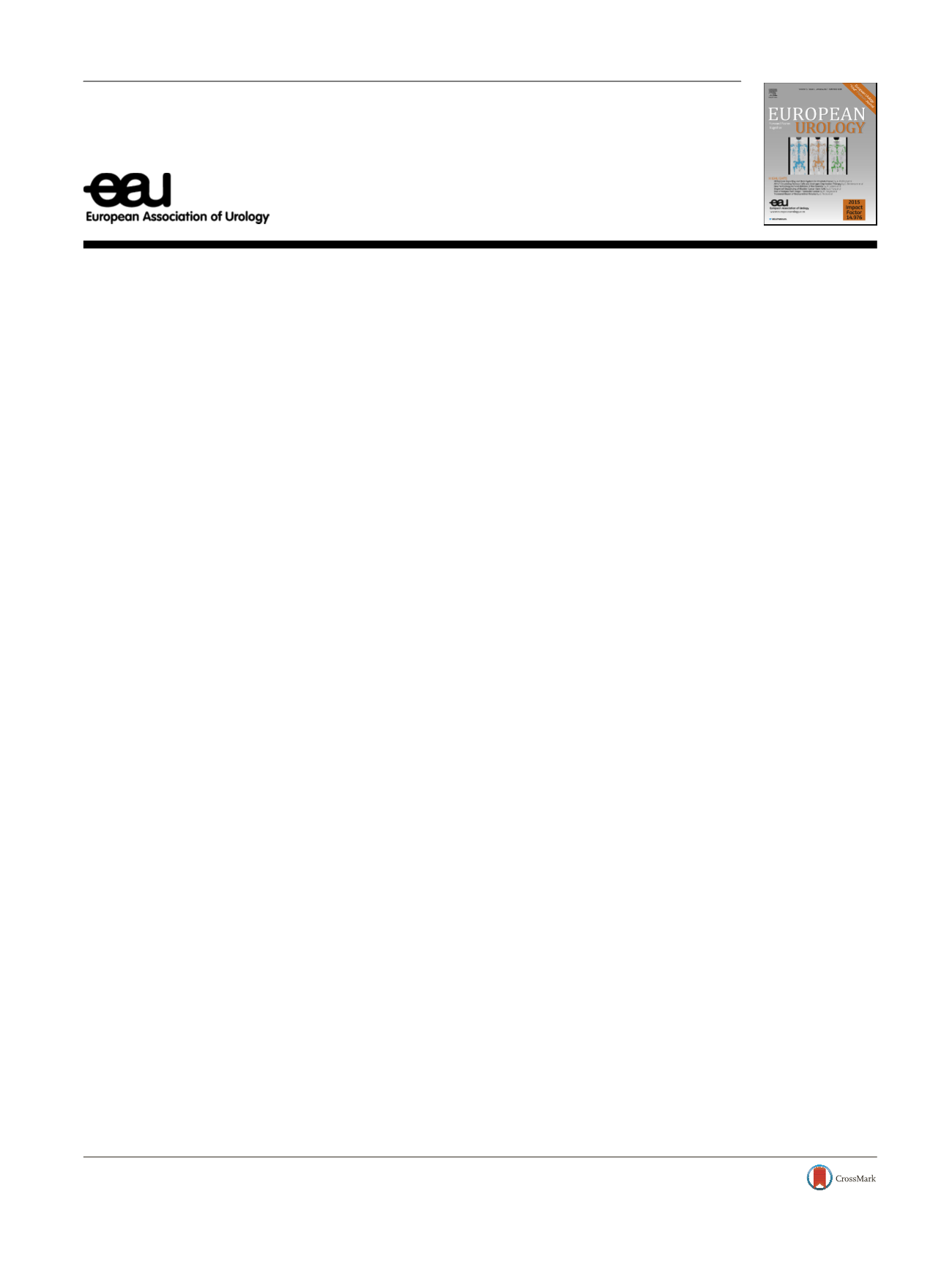

Letter to the Editor
Reply to Jae Heon Kim and Benjamin I. Chung’s Letter to
the Editor re: Julien Dagenais, Matthew J. Maurice,
Pascal Mouracade, Onder Kara, Ercan Malkoc,
Jihad J. Kaouk. Excisional Precision Matters:
Understanding the Influence of Excisional Volume Loss
on Renal Function After Partial Nephrectomy. Eur Urol
2017;72:168–70
We would like to thank Drs. Kim and Chung for their well–
thought out comments in response to our paper
[1]
. First,
we agree that renal functional scans can provide an
additional level of precision when analyzing postoperative
renal function. However, cost and availability limit their
widespread use, so these data are available for a limited
number of patients, which hampers more in-depth statisti-
cal analyses. Given the complexity of factors affecting
postoperative renal function after partial nephrectomy (PN)
[2]
, appropriate statistical modeling is paramount. More-
over, we were reassured by the stability of glomerular
filtration rate (GFR) measurements during our follow-up
interval (Supplementary Fig. 1 in
[1]
) and by the consistency
of our findings in Table 1
[1]
with previously reported
literature that anticipates 90% global and 80% ipsilateral
renal functional preservation after PN
[1]
. Therefore, we
believe that our use of GFR to assess renal functional decline
is both appropriate and has high clinical utility.
While we agree in theory that positive margins may alter
measurements of excisional volume loss, that effect would
only be anticipated if margins are grossly positive. Given
that enucleation is not routinely performed at our institu-
tion, positive margins were mostly isolated to a very small
surface area (focally positive) and not to a larger contact
surface area of the tumor. Indeed, the cohorts of patients
with and without positive margins had equivalent GFR
preservation (
t
= 0.40,
p
= 0.69). Furthermore, data sup-
porting the authors’ assertion of the association between
positive margin rates and ultimate oncologic outcomes are
[1_TD$DIFF]
questionable
[3]
. Within our own institution, we have
previously found no such relationship, probably because
margins are mostly focally positive or reflect sinus fat
invasion at the cellular level
[4]
.
To that end, we have continued to ‘‘push the envelope’’
for PN with the aim of renal functional preservation.
Therefore, we are routinely challenged by complex cases
such as high RENAL scores (15.9%), multifocal tumors
(4.3%), and more aggressive pathology (9.4% pT3a). Adopt-
ing PN in these settings is of increased importance when
patients present with chronic kidney disease (CKD), CKD
risk factors, or preoperative proteinuria
[5]
. Our own cohort
had very high risk of renal functional decline: 67.5% of
patients had either preoperative CKD stage 3, hyperten-
sion or diabetes, or proteinuria. In this high-risk setting,
there may be
[2_TD$DIFF]
few opportunities for a surgeon’s influence on
ultimate renal function. However, use of robotic surgery
and limiting blood loss may be two areas worth pursuing
given their association with lower excisional volume loss
[6]
. Additional work to identify potentially modifiable
factors in renal functional decline after PN will be of
continued importance in the future.
Conflicts of interest:
[3_TD$DIFF]
Jihad
[4_TD$DIFF]
H.
[5_TD$DIFF]
Kaouk
[6_TD$DIFF]
certifies that all conflicts of interest,
including specific financial interests and relationships and affiliations
relevant to
[7_TD$DIFF]
the subject matter or materials discussed in the manuscript
(eg, employment/affiliation, grants or funding, consultancies, honoraria,
stock ownership or options, expert testimony, royalties, or patents filed,
received, or pending), are the following: Endocare, Inc.—J.H. Kaouk
(consultant).
References
[1]
Dagenais J, Maurice MJ, Mouracade P, et al. Excisional precision matters: understanding the influence of excisional volume loss on renal function after partial nephrectomy. Eur Urol 2017;72:168– 70.
[2]
Mir MC, Ercole C, Takagi T, et al. Decline in renal function after partial nephrectomy: etiology and prevention. J Urol 2015;193: 1889–98.
[3]
Laganosky DD, Filson CP, Master VA. Surgical margins in nephron- sparing surgery for renal cell carcinoma. Curr Urol Rep 2017;18:8.
[4]
Mouracade P, Kara O, Maurice MJ, et al. Patterns and predictors of recurrence after partial nephrectomy for kidney tumors. J Urol 2017;197:1403–9.[5]
Ito K, Nakashima J, Hanawa Y, et al. The prediction of renal function 6 years after unilateral nephrectomy using preoperative risk fac- tors. J Urol 2004;171:120–5.
E U R O P E A N U R O L O G Y 7 2 ( 2 0 1 7 ) e 1 3 3 – e 1 3 4ava ilable at
www.sciencedirect.comjournal homepage:
www.eu ropeanurology.comDOIs of original articles:
http://dx.doi.org/10.1016/j.eururo.2017.05.019,
http://dx.doi.org/10.1016/j.eururo.2017.02.004.
http://dx.doi.org/10.1016/j.eururo.2017.05.0180302-2838/
#
2017 European Association of Urology. Published by Elsevier B.V. All rights reserved.
















